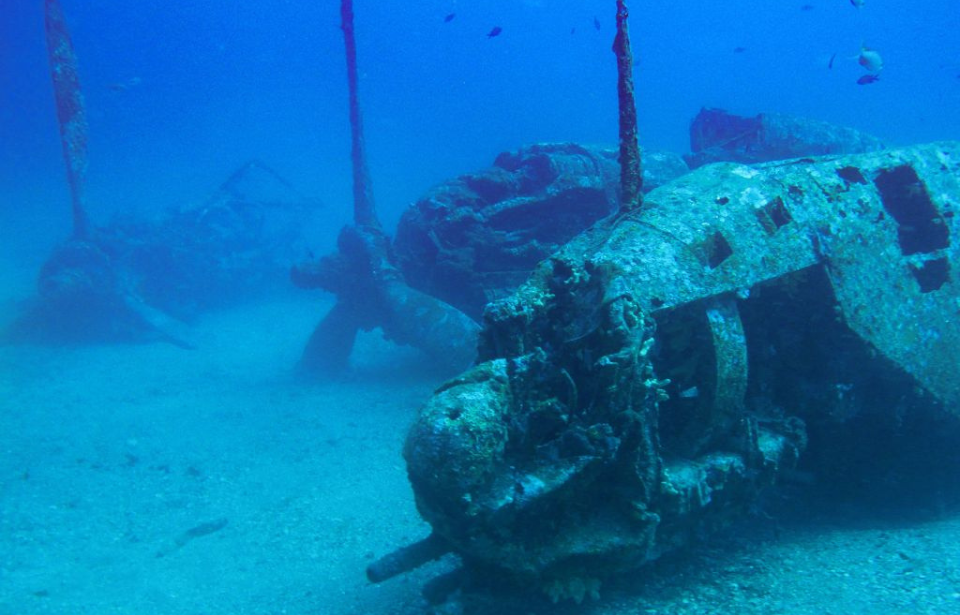The Lockheed P-38 Lightning was a versatile and highly capable fighter used by the United States and other Allied countries in both the European and Pacific Theaters of the Second World War. Earning itself the nickname, “Fork-Tailed Devil,” the aircraft was easily recognizable, making it easier for divers Marcel Camilleri and Alain Costanza to identify the wreck of a P-38G off the coast of France on November 12, 1996.
The above image, captured on August 12, 2018, shows the P-38G wreck in question, with the aircraft downed during World War II and rediscovered off of France’s southern coast years later. It was found just shy of 40 meters deep, off the coast of the town of La Ciotat.
When shot down on January 27, 1944, the P-38G was piloted by Second Lt. Harry R. Greenup of the 49th Fighting Squadron, 14th Fighter Group, Fifteenth Air Force. Also part of his formation was 21-year-old wingman Second Lt. James G. Riley. The pair were listed as operating out of both “Triolo” and “Foggia” in Southern Italy, meaning they were likely stationed at Triolo Airfield, part of the Foggia Airfield Complex.
That January day, they, along with several other P-38s, were tasked with accompanying over 60 Boeing B-17 Flying Fortresses on a mission over the German-occupied Salon-de-Provence Air Base. Unfortunately, they were met with enemy pushback when they reached La Ciotat. Riley was shot down by an unidentified German fighter and didn’t survive. Greenup, on the other hand, was hit with flak and able to land on the bay. His P-38G sunk only three nautical miles from where Riley’s settled.
Greenup was found swimming in the water by a German patrol boat. He was taken as a prisoner of war (POW) and held until the spring of 1945, when he returned to the US. He was awarded a Prisoner of War Medal for his time in captivity, as well as the Air Medal with one Oak Leaf Cluster from earlier in the conflict.
More from us: British Soldiers Were Heralded As Heroes Following Dunkirk
The pilot may have survived the waves once, but they came for him in the end. Eleven years later, while driving in Colorado, he crashed his car into a major river and was killed.
